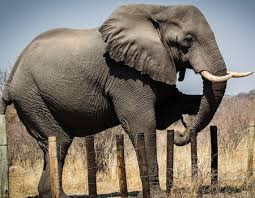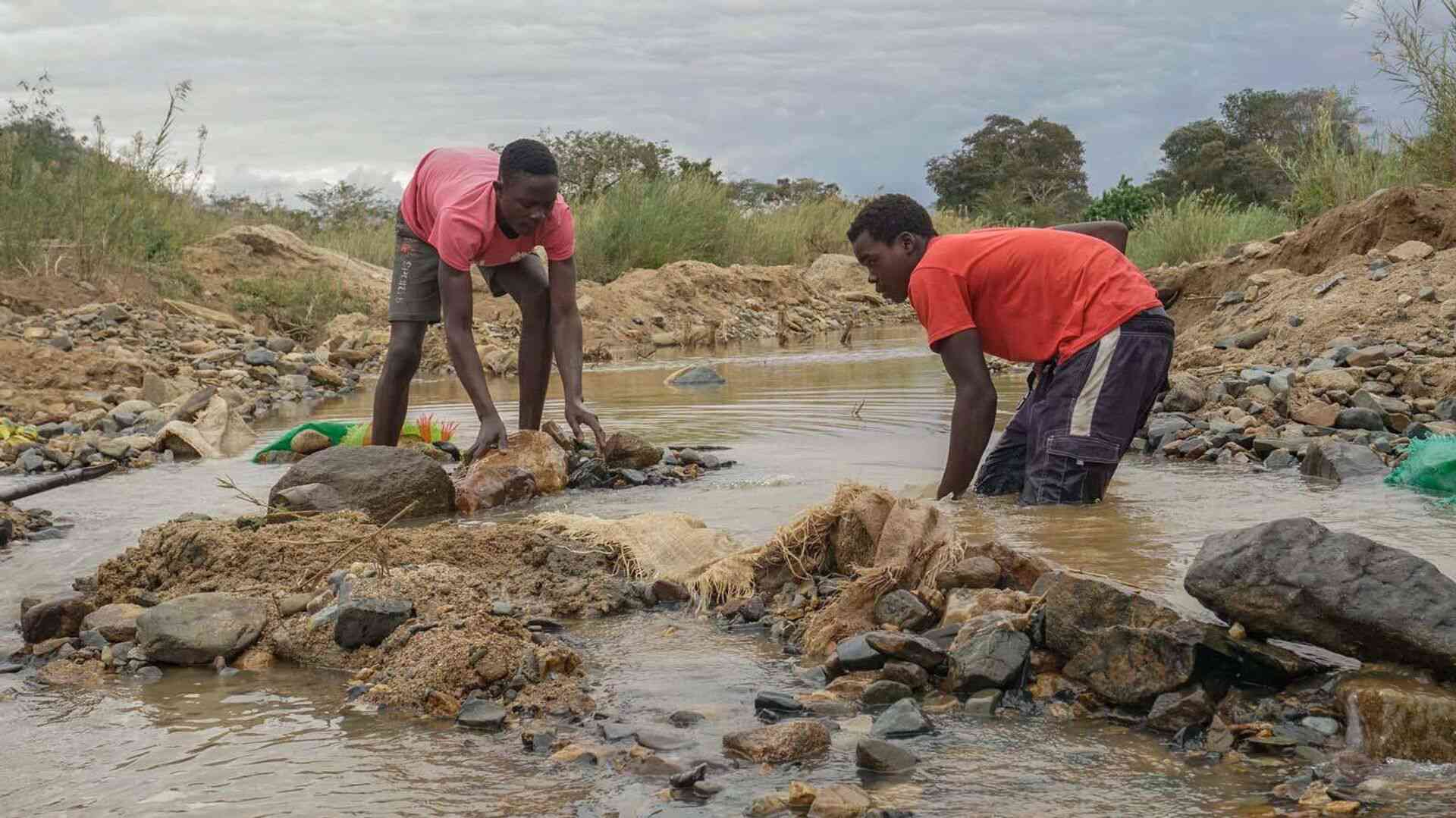
THE proposed culling of elephants in Zimbabwe was received with mixed reactions, locally and globally.
The strong contender to the African Savanna’s king of the jungle title is a global sweetheart, famous for their nurturing, calm but territorial nature and their imposing figure on the African tourism landscape.
The biggest cause of the human-elephant conflict in my view is human behaviour, especially agricultural land expansion, other economic activities, omissions in tracking their movements and controlling these.
Climate change and not wanton elephant behaviour is responsible for the food insecurity crisis. More eco–friendly approaches to this conflict are needed.
My latest encounter with them – at Hwange National Park last week with a tourist friend, Katie - made me realise how they were a cornerstone of our ratings as a tourist destination across the world.
The way they were giving way to the intruding tourist vans and vehicles and allowing us to take pictures of them without attacking us and others made me more sympathetic to their being and existence.
I could instantly see why conservationists and environmentalists the world over stand shocked by the need to cull them as both a drought mitigatory measure and to reduce the possibilities of exacerbated human-wildlife conflict in the outlying communities.
The drought, which indeed is a challenge, and food scarcity are not issues that can be ignored. People, even in urban communities, are food insecure and the situation is even worse in the drier outlying areas that border, for example, Hwange National Park, which according to The Guardian is “home to an estimated 100 000 elephants – the second – largest biggest population in the world after Botswana’’.
- COP26 a washout? Don’t lose hope – here’s why
- Out & about: Bright sheds light on Vic Falls Carnival
- COP26 a washout? Don’t lose hope – here’s why
- Out & about: Bright sheds light on Vic Falls Carnival
Keep Reading
According to the same article, the Zimbabwean Environment minister argued that the country had “more elephants than it needed” and that the plan was to have “… discussions with ZimParks and some communities to do like what Namibia has done, so that we cull the elephants and mobilise the women to maybe dry the meat, package it, and ensure that it gets to some communities that need the protein”.
A quick safari tour of Hwange National Park will show you a lot of elephants – from start to finish and from a tourist perspective the mammals are in perfect harmony with their environment.
Not one of them is weary and sickly. Outside a few broken tusks and maybe one or two limbing elephants, the herd is in perfect balance with their environment.
The last culling known to Zimbabwe was in 1988 and it is worrying how for almost 34 years the practice was abandoned. Why now?
The second argument borders around whether culling just 200 from a herd of over 100 000, a mere 0,2% of the herd, would help with any form of population control.
The bigger argument equally is also around empathy and the optics of just having 200 elephants shot down and lying dead on the ground across the conservation area.
One quickly imagines a random culling – baby elephants made orphans and the trauma that remains in the surviving lot. The untold pain the remaining herds go through after witnessing the said culling. How friendly is the approach?
In addition to that, will this not affect the migration patterns of the remaining herds and reduce the attractiveness of the conservancies? As a developing economy, we need the tourism revenue.
As a country rebranding and reopening the economy, does this not taint our image?
How long will the culling take, and will tourist activities be suspended to make way for the culling and how much revenue will be lost in the process?
The other argument is that the elephants will be hunted from areas where they have clashed with humans, including Hwange. The objective of this opinion piece is to look at ways to navigate human-wildlife conflict particularly; human-elephant conflict ,and share nature friendly solutions for reducing this conflict in sustainable and sometimes profitable low-cost ways.
Elephant-human wildlife conflict (EHWC) is a significant conservation concern, a sensitive one at that resulting in crop damage, property loss, and human fatalities.
As human settlements and agriculture have been expanding in Zimbabwe and in Hwange in particular, they have encroached upon elephant habitats, leading to conflicts.
Effective mitigation strategies needed to reduce this conflict.
Our approach would be to increase the use of nature friendly, income generating, low-cost and sustainable approaches to mitigate this conflict.
In Tanzania, the same challenge of human-elephant conflict is experienced around Mikumi National Park near Morogoro, which hosts around plus or minus 20 000 elephants.
The conflict has resulted in similar challenges, which include crop damage, especially during the wet season, livestock depredation as the elephant herds end up attracting carnivorous predators that are in pursuit of them and end up attacking softer targets like cattle and goats. Lastly, they damage property. No culling has been proposed yet!
In response, community-based organisations, like ECOWICE Tanzania, have upscaled nature friendly boundary constructing through the fencing of their field crop and residential areas with low-cost Kenya Top Bar Beehives.
Funny enough, elephants and bees are not good friends and with their strong sense of smell, the elephants cannot approach areas where they exist.
This is interesting in that the bees are of no harm to the elephants and the environment, and that this kind of fencing is an income and dietary supplement through honey and related sales.
Kenyan Top Bar hives are made from mostly industrial carpentry waste material and cutlings, and can be put together with a home use hammer and nails in under two hours. Can these be a panacea to the human-elephant conflict in Hwange?
In addition to this, other bio-fencing approaches are also being considered and one of these is Palmyra fencing, which has been effectively taken up as a wildlife deterrent fencing approach in Gonarezhou National Park, Save Valley Conservancy and Chiredzi and could be potentially upscaled in the Hwange area. Of course, a few boreholes will need to be drilled around the implementing communities to ensure water availability and well, anything other than culling related expenses is welcome.
The climate change reality for high vulnerability indexed communities like Hwange cannot be ignored in solving this problem. The area has water scarcity and even the National Park has made efforts to provide alternative watering holes for the wildlife populations to thrive.
Given this reality, Chili fencing emerges as an alternative food system, which is both climate resilient and has income generating potential.
It has been found that the capsaicin in chili peppers irritates the sensitive trunks and eyes of elephants, deterring them from crossing the barrier just as it irritates human eyes and trunks.
Chilis are widely available and inexpensive to grow, their production is easy to set up and maintain, they are non-toxic and biodegradable and above all they encourage local involvement in conservation and can be an entry point to discussions around wider human-elephant conflict mitigation.
Lastly, physical barriers, such as water harvesting trenches can also aid as a deterrent as well as a source of water for other food production needs reducing the triggering food shortages.
- Mafa is an agricultural economist, co-founder of Rima Africa Trust Zimbabwe, alumni at Community Solutions Programme and Climate Technology and finance lead at Food Justice Network Zimbabwe. These weekly New Perspectives articles, published in the Zimbabwe Independent, are coordinated by Lovemore Kadenge, an independent consultant, managing consultant of Zawale Consultants (Pvt) Ltd, past president of the Zimbabwe Economics Society and past president of the Chartered Governance & Accountancy Institute in Zimbabwe (CGI Zimbabwe). — kadenge.zes@gmail.com or mobile: +263 772 382 852.










